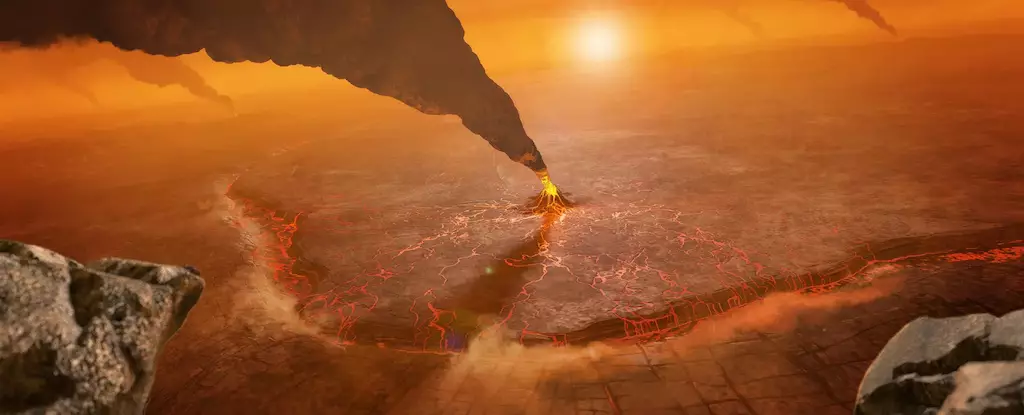For decades, Venus has been portrayed as the ultimate example of a hostile world. The planet’s suffocating atmosphere, blistering temperatures, and corrosive rains make it seem like a place where life could never flourish. However, a recent revisitation of older data suggests that this interpretation may be overly simplistic. New studies indicate that Venus might harbor internal processes strikingly similar to those of Earth, potentially changing the way we understand not just our neighboring planet, but also the geological evolution of terrestrial bodies in general. As researchers explore the phenomenon of coronae—large, circular geological formations—it becomes apparent that our understanding of Venus is far from complete.
Understanding Coronae: Nature’s Enigmatic Patterns
At the heart of this groundbreaking research are the coronae of Venus, geological features that, while resembling impact craters, possess a complex volcanic origin. These structures, often crowned with raised rings surrounding a central depression, have traditionally puzzled scientists. They are formed by the interaction of molten material from the planet’s interior that pushes upwards, creating a dome that eventually collapses as the material cools. The resultant architecture forms a ring-like structure, which not only bears a resemblance to the crowns it is named after but also serves as a vital clue to understanding the processes that govern Venus’s geology.
Unlike Earth, Venus lacks tectonic plates that move and interact, creating an ever-changing landscape. Still, the evidence of internal activity on Venus is abundant. Researchers have posited that the coronae serve as indicators of ongoing geological processes, manifested through how mantle plumes interact with the planet’s lithosphere. Understanding these processes could provide insight into the geological history of both planets.
New Insights from Old Data
The latest research capitalizes on gravity and topography data gathered by NASA’s Magellan probe during its mission in the 1990s. By reevaluating this archival information, scientists have identified 75 coronae on Venus and proposed new models explaining their formation. They found that 52 of these structures are associated with rising, buoyant magma plumes, which could herald ancient tectonic-like activities that retain lessons for Earth’s own geological processes.
These findings challenge the long-held belief that Venus’s geology is static and unchanging. Instead, the potential existence of plumes pushing surface materials outward, leading to unique geological interactions, opens up a dialogue between the geological activities of Venus and the tectonic movements of Earth. The analogies between the two planets are becoming increasingly pronounced, which may eventually provide a framework for understanding the formation and evolution of terrestrial worlds.
The Mechanisms at Play: Subduction and Dripping
Two specific processes observed on Earth may also function beneath the coronae of Venus: subduction and lithospheric dripping. On our planet, subduction occurs when one tectonic plate moves under another, a process driven by the dynamic forces of plate tectonics. While Venus lacks this explicit plate system, similar phenomena could be taking place. As hot plumes surge to the surface, they may force adjacent materials to collide, possibly pushing some crustal material down into the mantle.
On the other hand, lithospheric dripping presents another fascinating possibility. In this process, heat from beneath the lithosphere could cause the crust to begin melting, eventually leading to denser portions breaking off and sinking into the planet’s interior. While the specifics differ, these potential processes offer a model for understanding how geological materials on Venus might behave.
The Case for Continued Exploration
Given the potential insights that coronae may unlock, scientists argue for a renewed focus on exploring Venus. The stark differences between Venus and Earth provide an invaluable opportunity to study planetary evolution under varied conditions. Such exploration may also lead to a better understanding of the limits of habitability on terrestrial planets overall, fostering not only scientific discoveries but also sparking imaginations about the future of space exploration.
Venus, with its relentless temperatures and immense pressure, poses significant challenges for investigation. Yet the excitement generated by these new findings compels scientists to push forward. Understanding the active geological processes shaping Venus’s surface could revolutionize how we perceive the planet and enhance our comprehension of Earth’s geodynamics in the broader cosmic context. As researchers delve into active, ongoing processes that may mirror those on our planet, the lines separating Earth and its twin planet may blur, shedding light on the delicate balance of geological activities that dictate the habitability of any world in our solar system and beyond.

